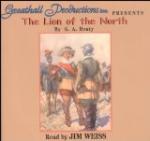In vain he tried to break through the Swedish spears. The wind was blowing full in the faces of the pikemen, and the clouds of smoke and dust which rolled down upon them rendered it impossible for them to see the heavy columns of horse until they fell upon them like an avalanche, yet with perfect steadiness they withstood the attacks.
Seven times Pappenheim renewed his charge; seven times he fell back broken and disordered.
As be drew off for the last time Gustavus, seeing the rout of the Saxons, and knowing that he would have the whole of Tilly’s force upon him in a few minutes, determined to rid himself altogether of Pappenheim, and launched the whole of his cavalry upon the retreating squadrons with overwhelming effect. Thus at the end of half an hour’s fighting Tilly had disposed of the Saxons, and Gustavus had driven Pappenheim’s horse from the field.
Three of the Scottish regiments were sent from the centre to strengthen Horn on the left flank, which was now exposed by the flight of the Saxons. Scarcely had the Scottish musketeers taken their position when Furstenberg’s horse returned triumphant from their pursuit of the Saxons, and at once fell upon Horn’s pikemen. These, however, stood as firmly as their comrades in the centre had done; and the Scottish musketeers, six deep, the three front ranks kneeling, the three in rear standing, poured such heavy volleys into the horsemen that these fell back in disorder; the more confused perhaps, since volley firing was at that time peculiar to the Swedish army, and the crashes of musketry were new to the Imperialists.
As the cavalry fell back in disorder, Gustavus led his horse, who had just returned from the pursuit of Pappenheim, against them. The shock was irresistible, and Furstenberg’s horse were driven headlong from the field. But the Imperialist infantry, led by Tilly himself, were now close at hand, and the roar of musketry along the whole line was tremendous, while the artillery on both sides played unceasingly.
Just as the battle was at the hottest the Swedish reserve came up to the assistance of the first line, and Sir John Hepburn led the Green Brigade through the intervals of the Swedish regiments into action. Lord Reay’s regiment was in front, and Munro, leading it on, advanced against the solid Imperialist columns, pouring heavy volleys into them. When close at hand the pikemen passed through the intervals of the musketeers and charged furiously with levelled pikes, the musketeers following them with clubbed weapons.
The gaps formed by the losses of the regiment at New Brandenburg and the other engagements had been filled up, and two thousand strong they fell upon the Imperialists. For a few minutes there was a tremendous hand-to-hand conflict, but the valour and strength of the Scotch prevailed, and the regiment was the first to burst its way through the ranks of the Imperialists, and then pressed on to attack the trenches behind, held by the Walloon infantry. While the battle was raging in the plain the Swedish cavalry, after driving away Furstenberg’s horse, swept round and charged the eminence in the rear of the Imperialists, cutting down the artillerymen and capturing the cannon there.




